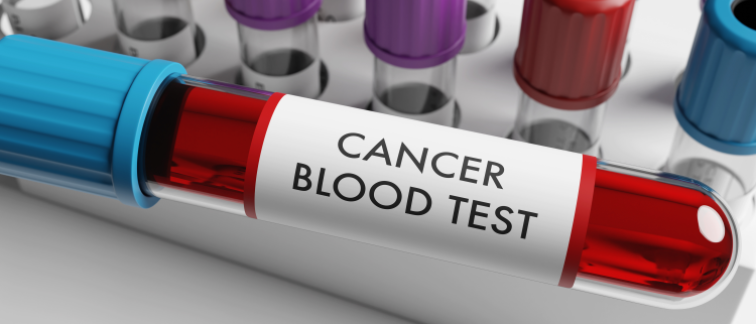and Genome Biology.
During certain biological processes, DNA can be cleaved at specific locations and released into the bloodstream. This pool of cell-free DNA (cfDNA) carries a wealth of information about its cells of origin and the mechanisms underlying its release.
Liquid biopsies, particularly those analyzing circulating tumor cells and cfDNA, are increasingly recognized for their potential to detect and monitor cancer. The biological characteristics of these DNA fragments, such as size patterns, genetic mutations, and methylation features, have been used to identify different types and stages of cancer. The approach is minimally invasive and easy to repeat, which can facilitate the tracking of treatment responses.
However, despite their promise, current methods struggle to achieve the necessary levels of sensitivity, specificity, and reproducibility required for widespread clinical use. To address this challenge, a team of Cancer Center Amsterdam researchers led by Florent Mouliere have explored innovative approaches that integrates multiple levels of biological information contained within cfDNA.
A "multi-modal" way
“The actual amount of tumor-derived signals in a tube of blood is actually small. The challenge is not just improving sensitivity, but to learn more from a single tube of blood, as well as developing faster, cheaper, and more flexible approaches” says Florent Mouliere, assistant professor at Amsterdam UMC and currently team leader at the Cancer Research UK National Biomarker Centre, University of Manchester.
The researchers hypothesized that combining different types of cfDNA biological information, generated using a single sequencing experiment, could improve liquid biopsy sensitivity and expand utility. To test this, they generated a catalog of cfDNA biological signatures from several independent large groups of patients with cancer.
They discovered that several relatively unknown biological features, such as nucleotide changes at the starting ends of the cfDNA fragments and changes in proportion of cfDNA sizes, were associated with tumors. These signatures were confirmed using a xenograft mouse model grafted with human colorectal cancer cells.
When analyzed together with somatic copy number aberrations (changes in the number of copies of specific DNA segments within tumor cell genomes shed into the bloodstream), the detection of cancer in early-stage patients was significantly enhanced. The team also demonstrated the prognostic and predictive value of these integrated metrics in patients with lung or esophageal cancer.
“In addition to improving sensitivity, the cfDNA multi-signal integration approach can help monitor cancer progression or response to treatments in patients, all at a competitive cost using a standard protocol. We anticipate this method will evolve over time, allowing for re-analysis to uncover new biological insights and further enhance sensitivity," explains Tom van den Ende, a postdoctoral researcher in the group of Hanneke van Laarhoven and co-first author together with Norbert Moldovan and Ymke van der Pol.
Fast Forward
The research team also demonstrated that the applicability of this approach on another sequencing platform with an ultra-fast turnaround time: Nanopore sequencing.
“We found that long-read Nanopore sequencing can reduce the turnover time to deliver results from in general 2 weeks, or more, to less than 24 hours,” says Norbert Moldovan, a computation biologist in the Department of Pathology, Cancer Center Amsterdam.
Dr. Mouliere also notes the nanopore sequencing platform is highly deployable and has a much lower starting investment cost than more conventional sequencing techniques. “This is a push toward developing faster, smarter, cheaper and smaller liquid biopsy methods.”
The Mitochondrial Landscape
In addition to cfDNA derived from DNA contained in the nucleus, plasma harbors bits of cfDNA that originate from the mitochondria’s own DNA (mtDNA), organelles within eukaryotic cells that are responsible for energy production.
The characteristics and diagnostic potential of cfDNA derived from tumor mitochondria are largely unknown. To explore if this type of cfDNA has biomarker potential, the researchers first looked to see if the amounts are increased in the blood of cancer patients.
“The mtDNA fraction was significantly elevated in cholangiocarcinoma, colon, liver, pancreatic and prostate cancer, but not others, notably lung cancer.” says Ymke van der Pol, first author and former PhD student in the groups of Michiel Pegtel and Florent Mouliere. “It could be that the levels depend on the type of tissue or metabolic activity of the tumor, but more work needs to be done to further investigate this.”
By combining the mtDNA fractions with the tumor fraction determined by somatic copy number aberrations, both determined from the same sequencing analysis, the group was able to demonstrate that the performance of the classification of cancer cases from healthy controls could be improved.
Dr. Mouliere suggests that this new modality can be combined with other cfDNA metrics using artificial intelligence (AI) to enhance cancer detection at no additional cost. These findings represent a significant step forward in the field of liquid biopsies, offering hope for improved cancer diagnosis, monitoring, and treatment strategies.
For more information contact Florent Mouliere, or read the scientific publications:
Moldovan, N., Van der Pol, Y., Van den Ende, T. et al. (2023) Multi-modal cell-free DNA genomic and fragmentomic patterns enhance cancer survival and recurrence analysis. Cell Reports Medicine, https://doi.org/10.1016/j.xcrm.2023.101349.
Van der Pol, Y., Adhini Tantyo, N., et al. (2023) Real-time analysis of the cancer genome and fragmentome from plasma and urine cell-free DNA using nanopore sequencing. EMBO Mol Med (2023) e17282. https://doi.org/10.15252/emmm.202217282.
Van der Pol, Y., Moldovan, N., Ramaker, J. et al. (2023) The landscape of cell-free mitochondrial DNA in liquid biopsy for cancer detection. Genome Biol 24, 229. https://doi.org/10.1186/s13059-023-03074-w.
Funding:
This research was supported by the Liquid Biopsy Centre of Amsterdam UMC and a KWF grant.
Researchers involved
Norbert Moldovan
Ymke van der Pol
Tom van den Ende
Normastuti Adhini Tantyo
Jip Ramaker
Sanne Bootsma
Kristiaan J. Lenos
Louis Vermeulen
Dries Boers
Sandra Verkuijlen
Aafke Creemers

Trang Vu
Marieke F. Fransen
Shahneen Sandhu
Idris Bahce
D. Michiel Pegtel
Stephen Q. Wong
Sarah-Jane Dawson
Dineika Chandrananda
Renske Steenbergen
Hanneke van Laarhoven
Florent Mouliere
Text by Laura Roy
This article was created for Cancer Center Amsterdam.
Follow Cancer Center Amsterdam on LinkedIn & Twitter /X.
© 2024 New Haven Biosciences Consulting– All rights reserved.

